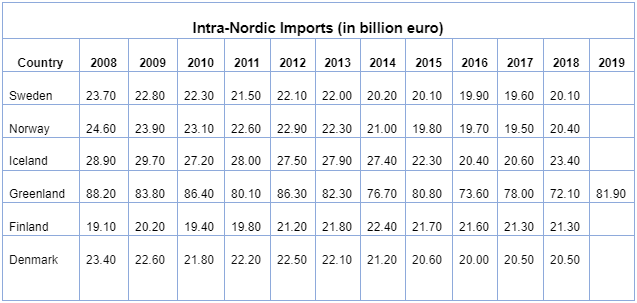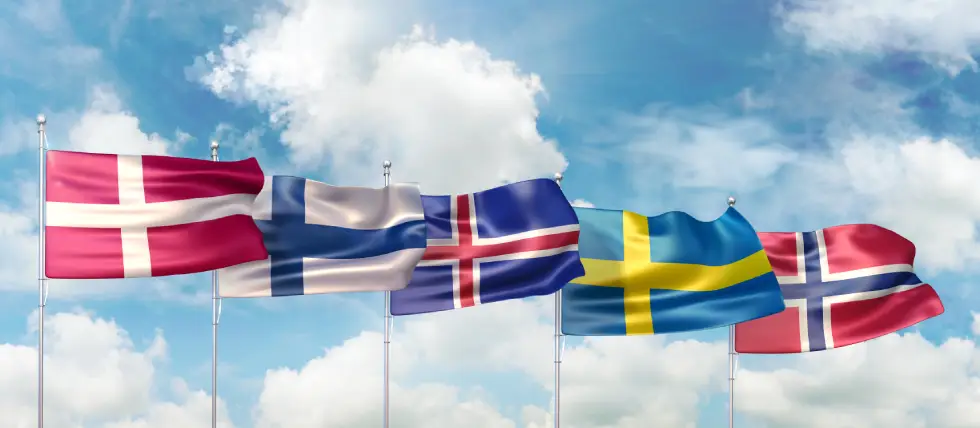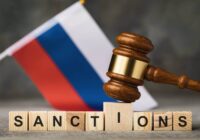The Nordic region has always been renowned for its remarkable combination of diversity and unity. Its deep historical heritage, shared principles and distinct socioeconomic structures showcase this.
The region encompasses a vast expanse of Northern Europe and the North Atlantic: independent nations like Denmark, Finland, Iceland, Norway and Sweden; autonomous regions like the Faroe Islands and Greenland; and the self-governing area of Åland. These distinct entities are bound by a shared cultural heritage and progressive leadership, creating a collective identity that surpasses borders.
The Nordic region’s diverse tapestry
The majority of the Nordic region’s population consists of North Germanic peoples, comprising over three-quarters of the total. Finland is home to a significant population of Finnic peoples. The diverse fabric of these nation is woven with various ethnic groups, such as the Greenlandic Inuits and the Sámi peoples as well as immigrants and their offspring.
The linguistic landscape in the Nordic region is truly captivating, showcasing a diversity of languages. Three distinct groups emerge: North Germanic, Finno-Ugric and Eskaleut languages. Despite the diverse array spoken in the region, a common linguistic heritage binds the area together. Danish, Norwegian and Swedish can be easily understood by speakers of one another.
The Nordic countries cover an expansive area of over 3.4 million square kilometers, displaying a wide variety of geographical characteristics. The region boasts a rich natural environment ranging from frozen caps and glaciers to lush green landscapes and picturesque coastlines. Greenland constitutes a significant portion of this landmass. With a staggering population of over 27 million, the region stands as a testament to its bustling communities. The variation in population density and distribution can be attributed to a combination of geographical features and historical factors.

The Nordic peoples are interconnected and embrace diversity.
Incredible economic development
The industrialization of the Nordic countries like Finland, Norway and Sweden owes much to the abundant natural resources these nations have. They include vast forests, iron ore deposits, bountiful fish stocks and ample hydroelectric power. Timber, pulp, paper and iron ore are instrumental in fueling economic growth, as they are major export commodities.
The Nordic economies’ structures have undergone significant transformation, shifting from a heavy reliance on natural resource-based industries to a more diversified foundation. The service sector has seen a tremendous surge, surpassing industrial exports to become the largest sector.
These countries have demonstrated impressive resilience and adaptability in the face of various economic challenges, including the stagnation of the 1970s and the financial crises of the 1990s and the 2000s. In pursuit of economic growth, they implemented stringent economic measures, embraced liberalization and deregulation and prioritized maintaining a robust government budget. Their forward-thinking strategy and investments in education and advancements contributed greatly to their recovery and continuous economic growth.
| Year | Denmark | Finland | Iceland | Norway | Sweden | Combined GDP |
| 1995 | 194.14 | 123.03 | 6.19 | 232.71 | 252.63 | 809.70 |
| 2005 | 240.62 | 179.67 | 9.82 | 310.83 | 343.02 | 1083.96 |
| 2015 | 259.25 | 188.86 | 35.49 | 354.94 | 417.22 | 1255.76 |
| 2023 | 310.64 | 206.74 | 155.57 | 398.42 | 483.22 | 1554.59 |
The Nordic region has experienced remarkable economic growth and development in recent decades. This success can be attributed to a steadfast dedication to innovation, social welfare and sustainable practices. The region has seen a consistent increase in its GDP thanks to its strong industrial base, investments in renewable energy and technology and commitment to education and research.
| Nordic GDP Forecast | |||
| Country | 2023 | 2024* | 2025* |
| Denmark | 1.8% | 2.1% (1.0%) | 2.0% (1.6%) |
| Sweden | 0% | 1.5% (1.3%) | 2.0% (1.8%) |
| Norway | 0.8% | 1.1% (1.1%) | 2.1% (2.1%) |
| Finland | -1% | -0.4% (0.3%) | 1.9% (1.9%) |
| Economic Indicators | Country | 2018 | 2019 | 2020 | 2021 | 2022 | 2023 |
| Economic growth rate, % | Denmark | 2.0 | 1.5 | -2.4 | 6.8 | 2.7 | 1.8 |
| Finland | 1.1 | 1.2 | -2.4 | 2.8 | 1.3 | -1.0 | |
| Iceland | 4.9 | 1.9 | -6.9 | 5.1 | 8.9 | 4.1 | |
| Norway | 1.2 | 1.1 | -1.8 | 4.0 | 3.0 | 0.8 | |
| Sweden | 2.0 | 2.0 | -2.3 | 5.9 | 2.8 | 0.0 | |
| Consolidated gross debt, % of GDP | Denmark | 34 | 33.7 | 42.3 | 36.0 | 29.8 | .. |
| Finland | 64.8 | 64.9 | 74.7 | 72.5 | 73.3 | .. | |
| Iceland | 63.2 | 66.6 | 77.8 | 75.6 | 68.7 | .. | |
| Norway | 38.9 | 39.9 | 45.2 | 42.5 | 37.4 | .. | |
| Sweden | 39.6 | 35.6 | 39.9 | 36.5 | 32.9 | .. | |
| Inflation rate, % | Denmark | 0.8 | 0.8 | 0.4 | 1.9 | 7.7 | 3.3 |
| Finland | 1.2 | 1.1 | 0.4 | 2.1 | 7.2 | 4.3 | |
| Iceland | 2.7 | 3.0 | 2.8 | 4.4 | 8.3 | 8.7 | |
| Norway | 2.8 | 2.2 | 1.3 | 3.5 | 5.8 | 5.5 | |
| Sweden | 2.0 | 1.8 | 0.5 | 2.2 | 8.4 | 8.5 | |
| Interest rate, % | Denmark | -0.65 | -0.75 | -0.6 | -0.6 | 1.75 | 3.6 |
| Finland | 0.0 | 0.0 | 0.0 | 0.0 | 2.5 | 4.5 | |
| Iceland | 4.5 | 3.0 | 0.75 | 2.0 | 6.0 | 9.25 | |
| Norway | 0.75 | 1.5 | 0.0 | 0.5 | 2.75 | 4.5 | |
| Sweden | -0.5 | -0.5 | 0.0 | 0.0 | 2.5 | 4.0 |
Via FocusEconomics
Additionally, the Nordic countries have consistently achieved high marks in various global indices. This speaks to their robust sociostructural foundations. For example, their impressive Human Development Index (HDI) rankings proudly showcase their dedication to guaranteeing the populace a superior quality of life. Their magnificent Corruption Perceptions Index (CPI) ranking highlights their dedication to integrity and transparency in governance.

Via OECD iLibrary

Via OECD iLibrary
| Index | Denmark | Finland | Iceland | Norway | Sweden |
| Human Development Index rank (2022 data, 2023-2024 report) | 5 | 12 | 3 | 2 | 5 |
| Corruption Perceptions Index rank (2022) | 1 | 2 | 14 | 4 | 5 |
| Press Freedom Index rank (2022) | 2 | 5 | 15 | 1 | 3 |
| Fragile States Index rank (2022) | 175 | 179 | 177 | 178 | 170 |
| Index of Economic Freedom rank (2023) | 9 | 11 | 19 | 12 | 10 |
| Environmental Performance Index rank (2022) | 1 | 3 | 10 | 20 | 5 |
| Good Country Index rank (2022) | 2 | 5 | 20 | 11 | 1 |
| Global Gender Gap Report rank (2022) | 32 | 2 | 1 | 3 | 5 |
| World Happiness Report rank (2023) | 2 | 1 | 3 | 7 | 6 |
Via Human Development Reports, Transparency International, Reporters Without Borders, Fragile States Index, Statista, Environmental Performance Index, Good Country, World Economic Forum, World Happiness Report
Valuable lessons from the Nordic region
The Nordic region’s economic strength teaches important lessons about achieving success. The global community can learn from these values:
Embracing diversity and inclusivity is a valuable strategy. The Nordic region’s notable success is due in no small part to its unwavering dedication to embracing diversity, both culturally and economically. The region established a society that values inclusivity and equal opportunities. Their success shows that, far from being an asset to be jealously guarded, a nation’s prosperity can be shared and indeed grows when one does so. The Nordic nations celebrate differences in ethnicity, language and socioeconomic models. Recognizing the importance of diversity is a driving force for strength and innovation, not a barrier to unity.
Sustainable development should be prioritized. Its significance in today’s interconnected world cannot be overstated. With pressing environmental and social challenges on the horizon, it is imperative that leaders focus on this issue. The Nordic model is centered on sustainable development with an emphasis on protecting the environment, promoting renewable energy and upholding social responsibility. Economic growth and environmental stewardship can be successfully integrated by prioritizing sustainability in their policies and societal frameworks.
Education and innovation are vital for any country. The Nordic countries have effectively cultivated a highly skilled workforce and a flourishing innovation ecosystem by investing in education. These factors play a key role in stimulating economic growth and promoting social development. In today’s ever-evolving society, it is necessary to foster an environment that encourages innovation and places high value on its people’s skills. This is crucial for achieving lasting success.
Social welfare systems should be enhanced. The Nordic welfare model prioritizes universal access to healthcare, education and social services. The countries have tackled socioeconomic inequality and enhanced their citizens’ quality of life by focusing on social welfare and income redistribution. Strong social welfare systems foster inclusive and resilient societies wherever they are implemented.
Regional cooperation and transparent dialogue should be encouraged. The Nordic countries are committed to regional cooperation as evidenced by their involvement in the Nordic Council and the Nordic Council of Ministers. These platforms help promote open dialogue and facilitate collaborative efforts to address shared challenges. The Nordic countries have dealt with common issues by fostering cooperation and mutual respect among themselves.
Fiscal responsibility and economic resilience are urgently important. The Nordic countries have shown impressive fiscal discipline and economic resilience in the midst of economic challenges. By implementing prudent fiscal strategies, promoting economic diversification and choosing long-term stability over short-term gains, they have navigated an uncertain period. Fiscal responsibility and economic resilience are essential for any nation to flourish. If the global community embraces these principles, nations worldwide can relish shared prosperity.
[Lee Thompson-Kolar edited this piece.]
The views expressed in this article are the author’s own and do not necessarily reflect Fair Observer’s editorial policy.
Support Fair Observer
We rely on your support for our independence, diversity and quality.
For more than 10 years, Fair Observer has been free, fair and independent. No billionaire owns us, no advertisers control us. We are a reader-supported nonprofit. Unlike many other publications, we keep our content free for readers regardless of where they live or whether they can afford to pay. We have no paywalls and no ads.
In the post-truth era of fake news, echo chambers and filter bubbles, we publish a plurality of perspectives from around the world. Anyone can publish with us, but everyone goes through a rigorous editorial process. So, you get fact-checked, well-reasoned content instead of noise.
We publish 2,500+ voices from 90+ countries. We also conduct education and training programs
on subjects ranging from digital media and journalism to writing and critical thinking. This
doesn’t come cheap. Servers, editors, trainers and web developers cost
money.
Please consider supporting us on a regular basis as a recurring donor or a
sustaining member.
Will you support FO’s journalism?
We rely on your support for our independence, diversity and quality.







Comment